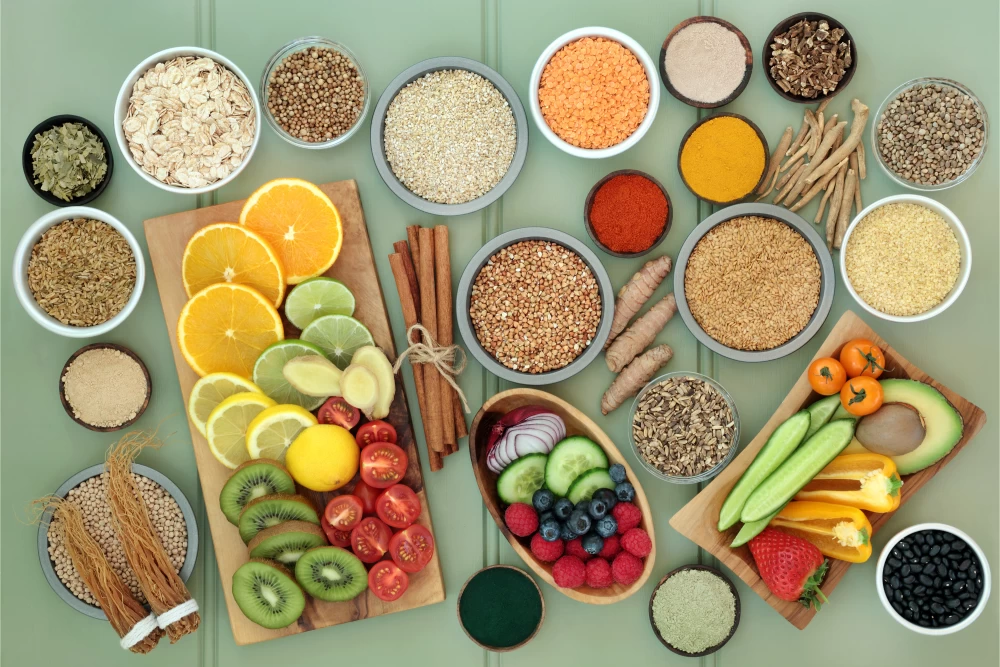
- 25th March 2023
Table of Contents
What is Fatty Liver?
Fatty liver is a condition in which there is an abnormal buildup of fat in the liver. This can occur due to various reasons such as excessive alcohol consumption, high levels of triglycerides, obesity, and diabetes. Fatty liver can be identified through blood tests and imaging studies like ultrasounds or CT scans. When it comes to managing fatty liver, making changes to one's diet can be an important step towards improving liver health. Reading food labels carefully can help individuals make informed choices about what they consume. Look for foods that are low in saturated and trans fats, added sugars, and sodium. Instead, opt for foods that are high in fiber, whole grains, lean protein sources like chicken or fish, fruits and vegetables. It’s also essential to pay attention to serving sizes listed on food labels since eating too much of any type of food may cause weight gain which could worsen fatty liver disease symptoms over time. Making small changes such as swapping out sugary drinks for water or choosing grilled options instead of fried ones when eating out can go a long way towards reducing the risk factors associated with fatty liver disease.
Understanding Nutrition Labels
Nutrition labels are a vital tool for anyone wanting to maintain good health, especially if you're following a fatty liver diet. They provide valuable information about the nutritional content of different foods, which can help you make informed choices about what to eat. However, understanding nutrition labels can be challenging, as they contain lots of technical terms and figures. The first thing to look at when reading a food label is the serving size. This tells you how much of the product constitutes one serving and makes it easier to interpret the rest of the information on the label. Next, check the calorie count per serving, as well as the amount of fat (saturated and unsaturated), carbohydrates (including sugar), protein, fiber, and sodium in each portion. It's also worth checking any additional information on nutrition labels that may be relevant to your dietary needs or restrictions. For example, if you're following a low-carb diet or have an allergy or intolerance to certain ingredients such as gluten or dairy products. By taking time to understand nutrition labels better, you'll be able to make healthier choices that promote optimal liver function while reducing your risk for developing fatty liver disease.
Fat, Saturated Fat & Trans Fat
Fat, saturated fat, and trans fat are three components that are crucial to understand when reading food labels for a fatty liver diet. Fat is an essential nutrient in our body that provides energy and aids in the absorption of vitamins. However, consuming too much fat can lead to weight gain and increase the risk of developing fatty liver disease. Saturated fat is found mainly in animal products such as meat and dairy, while trans fats are often added to processed foods. When reading food labels for a fatty liver diet, it's important to pay attention to the amount of total fat listed per serving size. Aim for foods with lower amounts of total fat or choose healthier fats such as olive oil, nuts, and avocados. Additionally, check for the percentage daily value (% DV) of saturated and trans fats in the product. Experts recommend limiting intake of saturated fats to less than 10% of your daily calories and avoiding trans fats altogether. In conclusion, understanding how to read food labels for a fatty liver diet is essential when trying to manage this condition. Paying close attention to the amount of total fat listed per serving size as well as percentages on saturated or trans fats can help prevent further damage from occurring within the liver by maintaining healthy nutrition choices through carefully selecting foods that promote proper health management over time!
Calorie and Carbohydrate Content

Calorie and carbohydrate content are crucial factors to consider when reading food labels for a fatty liver diet. Calories are a unit of measure for the energy provided by food, and excessive calorie intake can lead to weight gain, which is a significant risk factor for fatty liver disease. Therefore, it's essential to watch your calorie intake and choose foods with low calories per serving. Similarly, carbohydrates play an important role in managing fatty liver disease as they directly affect blood glucose levels. Carbs are broken down into glucose, and high carb intake can cause spikes in blood sugar levels that may worsen insulin resistance and contribute to inflammation in the liver. Hence, choosing foods with lower carbohydrate content is beneficial. When reading food labels, check the serving size, total calories per serving or package, total carbohydrates per serving or package, and sugar content. Additionally, look out for added sugars as they provide empty calories without any nutritional value. By keeping track of your calorie and carbohydrate intake through careful label reading, you can better manage your fatty liver condition while maintaining a healthy lifestyle.
Differentiating Good Fats from Bad Fats
When it comes to fatty liver diet, understanding the difference between good and bad fats is crucial. Good fats can provide numerous health benefits while bad fats increase the risk of heart disease, stroke, and other chronic diseases. To differentiate between good and bad fats, it is important to read food labels carefully. One way to identify good fats is by looking for monounsaturated and polyunsaturated fats, which are considered healthy for the heart. These types of fat can be found in foods like fish, avocados, nuts, seeds, and vegetable oils such as olive or canola oil. On the other hand, saturated and trans fats should be avoided as much as possible because they raise cholesterol levels. Another way to tell if a product contains unhealthy fat is by checking its ingredient list. Foods that contain hydrogenated oils or partially hydrogenated oils should be avoided as they contain trans fat which increases LDL (bad) cholesterol in the body. Choosing products with low amounts of saturated and trans fat will help you maintain a healthy liver function while reducing your risk for developing chronic diseases such as heart disease or diabetes.
Protein Content
Protein is an essential nutrient that plays a crucial role in the repair and growth of body tissues. Therefore, it is important to ensure that you consume enough protein while on a fatty liver diet. When reading food labels, check for the protein content per serving size. A good rule of thumb is to aim for at least 20-30 grams of protein per meal. In addition to checking the total protein content, it's important to take note of where the protein is coming from. Opt for lean sources such as chicken breast, fish, and tofu over high-fat options like red meat or fried foods. These lean proteins will help support your liver function without adding unnecessary saturated fat. Lastly, be mindful of any added sugars or artificial sweeteners in products marketed as high-protein snacks or shakes. These additives can contribute to inflammation and further damage to your liver health. Stick with whole food sources of protein whenever possible for optimal nutrition benefits on a fatty liver diet plan.
Sodium Content
Sodium is an essential mineral that plays a vital role in regulating blood pressure, maintaining body fluid balance, and transmitting nerve impulses. However, excessive sodium intake can lead to various health problems such as high blood pressure, heart disease, and stroke. For people with fatty liver disease, it is crucial to monitor their sodium intake since a high-sodium diet can worsen the condition. When reading food labels for a fatty liver diet, it is important to pay attention to the sodium content listed in milligrams (mg). The American Heart Association recommends limiting daily sodium intake to less than 2,300 mg per day or even less if you have certain health conditions like fatty liver disease. Foods with 140 mg of sodium or less per serving are considered low-sodium foods while those with more than 400 mg of sodium per serving are considered high-sodium foods. To reduce your overall sodium consumption, choose fresh and whole foods instead of processed or pre-packaged ones. If you must buy packaged foods, look for those labeled "low-sodium" or "no added salt." You can also use herbs and spices as a flavoring substitute for salt when cooking at home. By reducing your daily sodium intake and making healthier food choices overall, you can help improve your fatty liver condition and overall well-being.
Conclusion
In conclusion, reading food labels is crucial for anyone following a fatty liver diet. It allows you to make informed decisions about the types of foods you consume and their impact on your liver health. By paying attention to the serving size, calories, fat content, and added sugars listed on the label, you can minimize your intake of harmful substances while maximizing nutrients that support liver function. However, it's important to note that food labeling regulations vary by country and may be subject to change over time. To stay up-to-date with the latest guidelines and recommendations, consult reliable sources such as government agencies or trusted health organizations. Ultimately, educating yourself on how to read food labels is an essential step towards achieving optimal liver health. With this knowledge in hand, you can feel confident in making informed choices about what foods to include in your diet and which ones to avoid or consume in moderation.
